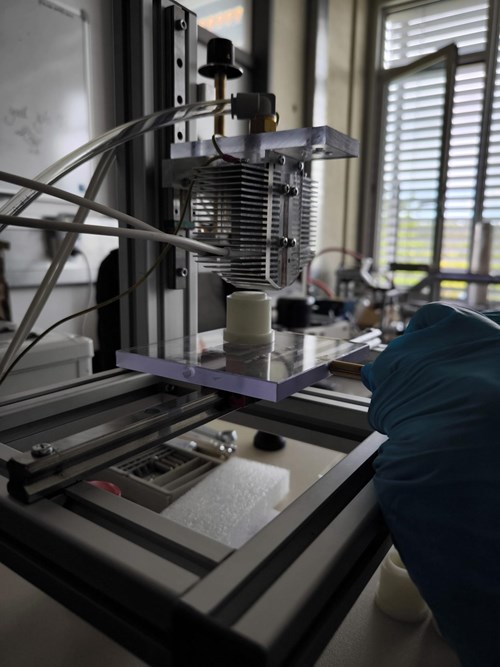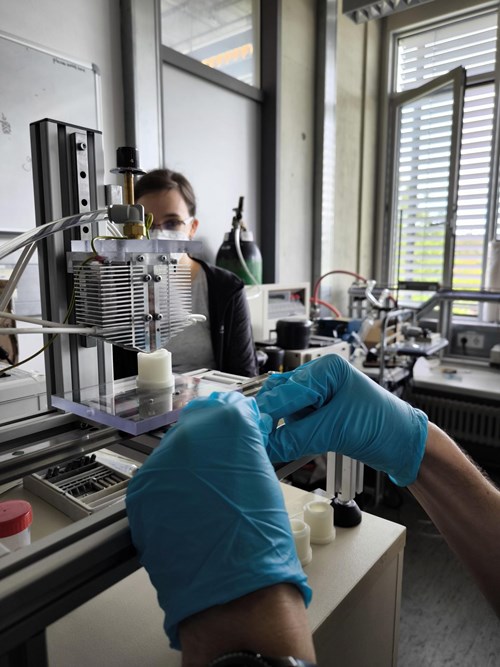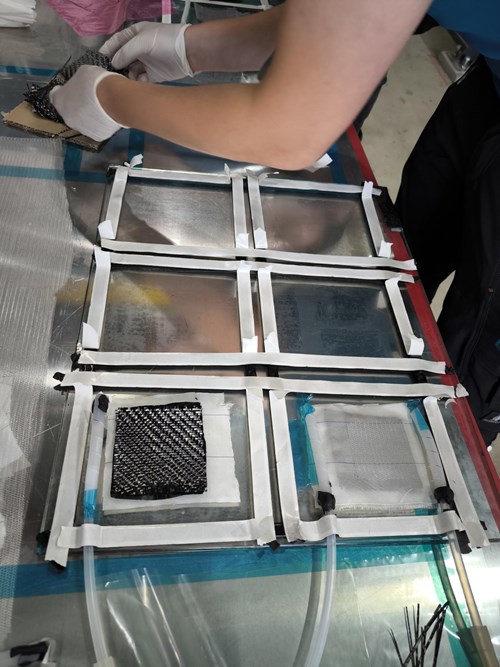Plasma systems with planar and curved DCSBD units and a plasma jet for experiments were moved to the IFB lab and used to functionalize the glass and flax reinforcing fibers. The IFP group created the FRP composites using various manufacturing technologies, e.g., vacuum infusion processes (VIP), resin transfer molding techniques (RTM), and UV curing.
Dr. Krumpolec prepared conductive composites using the unique rGO papers prepared at CEPLANT. The stay was focused solely on the preparation of these innovative composites. The samples are now tested for mechanical properties, such as matrix-fiber interface adhesion, surface morphology, and chemistry (SEM and XPS). The IFB group focuses on mechanical and optical testing, such as the bending properties, transmittance of transparent glass, or refractive index change measurements.
Eliška Rapcová, a master's student of Plasma Physics and Nanotechnology, accompanied the scientists to IFB for her research stay funded by the Freemovers program. She worked there for one month, and the results of her work will be part of her master's thesis on the effect of plasma treatment of glass fibers on the properties of laminated FRP composites.







